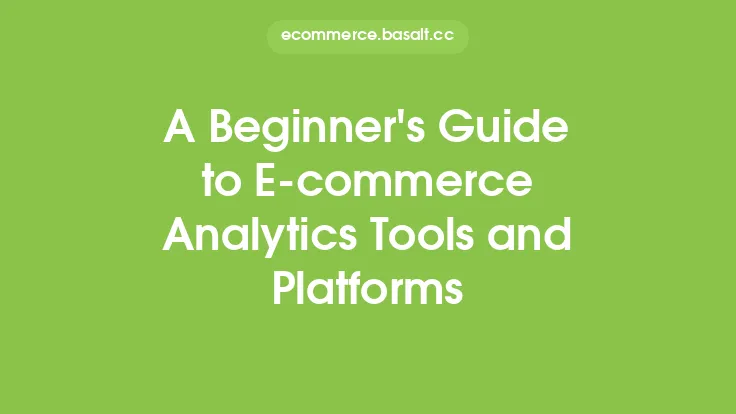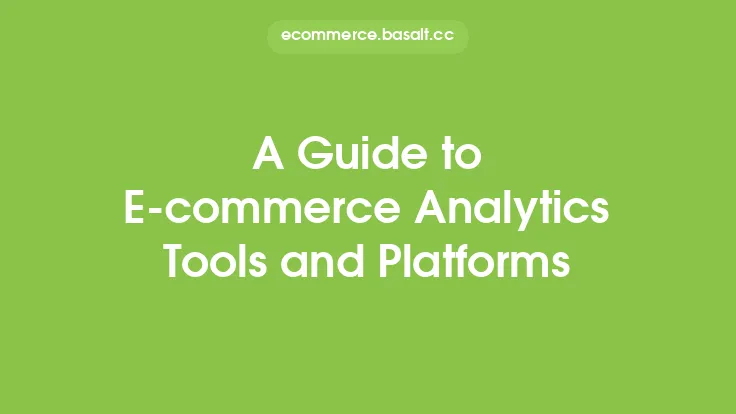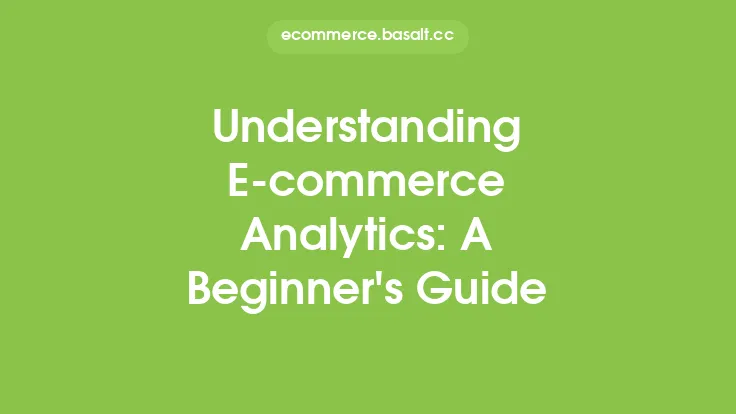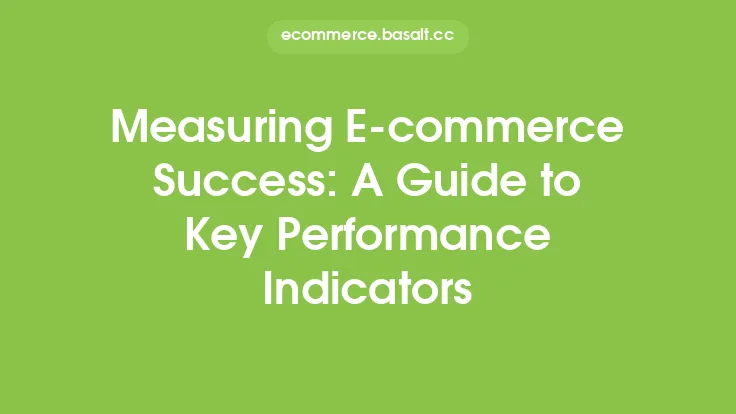Getting started with e-commerce analytics can be a daunting task, especially for beginners. With so many tools and platforms available, it's hard to know where to start. In this article, we'll take a closer look at the different types of e-commerce analytics tools, their features, and how to choose the right one for your business.
Introduction to E-commerce Analytics Tools
E-commerce analytics tools are software applications that help online store owners track and analyze their website's performance, customer behavior, and sales data. These tools provide valuable insights that can be used to optimize marketing campaigns, improve customer experience, and increase conversions. There are several types of e-commerce analytics tools, including web analytics tools, social media analytics tools, and customer analytics tools. Each type of tool provides unique insights and can be used to achieve specific business goals.
Types of E-commerce Analytics Tools
There are several types of e-commerce analytics tools, each with its own set of features and benefits. Some of the most common types of e-commerce analytics tools include:
- Web analytics tools: These tools track website traffic, page views, bounce rates, and conversion rates. Examples of web analytics tools include Google Analytics and Adobe Analytics.
- Social media analytics tools: These tools track social media engagement, follower growth, and social media conversions. Examples of social media analytics tools include Hootsuite Insights and Sprout Social.
- Customer analytics tools: These tools track customer behavior, including purchase history, browsing history, and customer demographics. Examples of customer analytics tools include Salesforce and HubSpot.
- Marketing analytics tools: These tools track the performance of marketing campaigns, including email marketing, paid advertising, and content marketing. Examples of marketing analytics tools include Marketo and Pardot.
Features of E-commerce Analytics Tools
E-commerce analytics tools typically have a range of features that provide insights into website performance, customer behavior, and sales data. Some common features of e-commerce analytics tools include:
- Data visualization: This feature provides a graphical representation of data, making it easier to understand and analyze.
- Reporting: This feature provides detailed reports on website performance, customer behavior, and sales data.
- Segmentation: This feature allows users to segment data based on specific criteria, such as demographics or behavior.
- Funnel analysis: This feature provides insights into the customer journey, including where customers drop off and why.
- A/B testing: This feature allows users to test different versions of a webpage or marketing campaign to see which one performs better.
Choosing the Right E-commerce Analytics Tool
With so many e-commerce analytics tools available, it can be hard to choose the right one for your business. Here are some factors to consider when choosing an e-commerce analytics tool:
- Ease of use: Choose a tool that is easy to use and navigate, even for those who are not tech-savvy.
- Integration: Choose a tool that integrates with your e-commerce platform and other marketing tools.
- Cost: Choose a tool that fits within your budget and provides a good return on investment.
- Features: Choose a tool that provides the features you need to achieve your business goals.
- Support: Choose a tool that provides good customer support and resources.
Implementing E-commerce Analytics Tools
Implementing e-commerce analytics tools requires some technical expertise, but it's a relatively straightforward process. Here are the steps to follow:
- Sign up for the tool: Choose the tool you want to use and sign up for an account.
- Install the tracking code: Install the tracking code on your website to start collecting data.
- Set up goals and events: Set up goals and events to track specific actions on your website, such as form submissions or purchases.
- Configure reports: Configure reports to provide insights into website performance, customer behavior, and sales data.
- Analyze data: Analyze the data to identify trends, patterns, and areas for improvement.
Best Practices for Using E-commerce Analytics Tools
To get the most out of e-commerce analytics tools, it's essential to follow best practices. Here are some best practices to keep in mind:
- Track key metrics: Track key metrics, such as conversion rates, average order value, and customer lifetime value.
- Segment data: Segment data to provide insights into specific customer groups or behaviors.
- Use data to inform decisions: Use data to inform decisions, rather than relying on intuition or guesswork.
- Test and iterate: Test and iterate different marketing campaigns and website changes to see what works best.
- Keep data up-to-date: Keep data up-to-date and accurate to ensure that insights are reliable and trustworthy.
Common Mistakes to Avoid
When using e-commerce analytics tools, there are several common mistakes to avoid. Here are some of the most common mistakes:
- Not tracking key metrics: Not tracking key metrics, such as conversion rates or average order value.
- Not segmenting data: Not segmenting data to provide insights into specific customer groups or behaviors.
- Not using data to inform decisions: Not using data to inform decisions, but instead relying on intuition or guesswork.
- Not testing and iterating: Not testing and iterating different marketing campaigns and website changes to see what works best.
- Not keeping data up-to-date: Not keeping data up-to-date and accurate, which can lead to unreliable insights.
Conclusion
E-commerce analytics tools are essential for any online store owner who wants to optimize their website, improve customer experience, and increase conversions. By understanding the different types of e-commerce analytics tools, their features, and how to choose the right one, you can make data-driven decisions that drive business growth. Remember to follow best practices, avoid common mistakes, and keep data up-to-date to get the most out of e-commerce analytics tools. With the right tool and a little practice, you can unlock the full potential of your e-commerce business and achieve long-term success.





